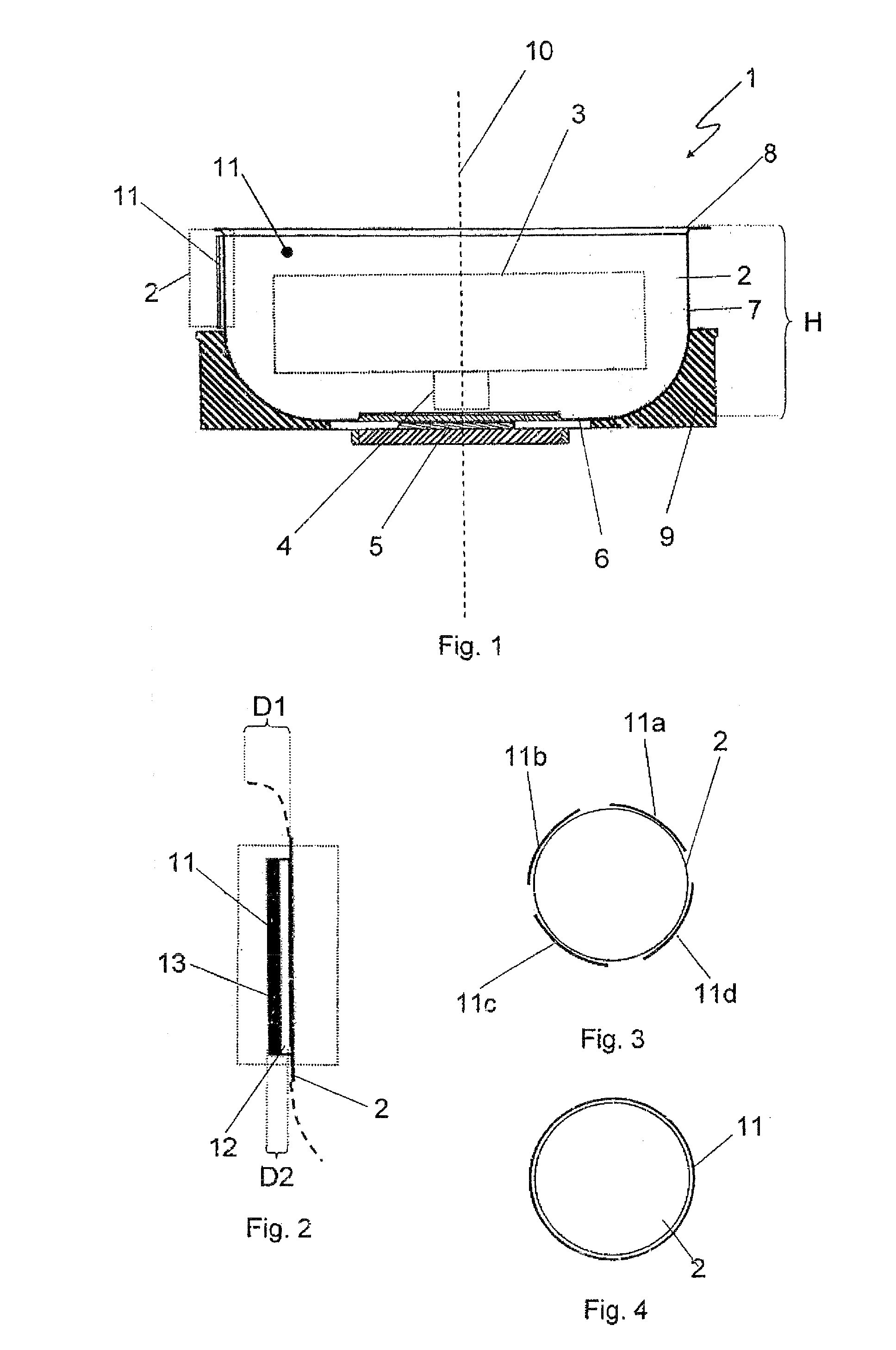Low-Noise Rotor Chamber For A Centrifuge
- Summary
- Abstract
- Description
- Claims
- Application Information
AI Technical Summary
Benefits of technology
Problems solved by technology
Method used
Image
Examples
Embodiment Construction
[0035]Referring now to the figures, identifical components are provided with identical reference numerals in the embodiments shown hereafter.
[0036]The centrifuge 1, which is only partially shown in FIG. 1, comprises a rotor chamber 2 in a housing (not shown) for receiving a rotor 3 indicated by dashed lines (in particular a swing-out rotor), which is connected via a drive shaft 4 to a motor element 5. The rotor chamber 2 also comprises a flat base area 6, a wall area 7 adjoining thereon on top, and an upper edge area 8. The rotor chamber 2 is implemented as open on top and is covered to the outside in operation by a lid (not shown). Furthermore, in its lower area the rotor chamber 2 is received in a foam molded part 9 implemented as trough-like, which extends from the base area 6 up to approximately half the height H of the rotor chamber 2. A damping lining 11 adjoins the foam molded part 9 on top in the direction of the rotational axis 10, around which the rotor 3 rotates in operat...
PUM
| Property | Measurement | Unit |
|---|---|---|
| Time | aaaaa | aaaaa |
| Thickness | aaaaa | aaaaa |
| Thickness | aaaaa | aaaaa |
Abstract
Description
Claims
Application Information
 Login to View More
Login to View More - R&D
- Intellectual Property
- Life Sciences
- Materials
- Tech Scout
- Unparalleled Data Quality
- Higher Quality Content
- 60% Fewer Hallucinations
Browse by: Latest US Patents, China's latest patents, Technical Efficacy Thesaurus, Application Domain, Technology Topic, Popular Technical Reports.
© 2025 PatSnap. All rights reserved.Legal|Privacy policy|Modern Slavery Act Transparency Statement|Sitemap|About US| Contact US: help@patsnap.com


